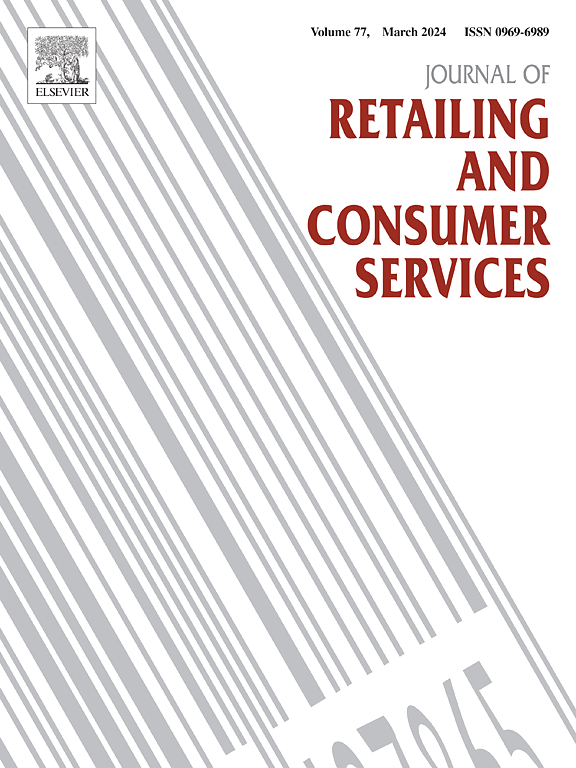From attraction to aversion and back: examining brand hate, love, and retention
IF 13.1
1区 管理学
Q1 BUSINESS
Journal of Retailing and Consumer Services
Pub Date : 2025-10-02
DOI:10.1016/j.jretconser.2025.104554
引用次数: 0
Abstract
This study investigates psychological ownership, brand uniqueness, hedonic pleasure, and brand passion as antecedents of brand love (BL). Additionally, the study explores the mediating role of brand hate (BH) and the moderating effects of brand obsession and opposition loyalty on BL. Finally, the study examines brand retention (BR) as an outcome of BL. Four studies were conducted to test proposed relationships, and data were analyzed using partial least squares structural equations modelling (PLS-SEM) through SmartPLS 4. The findings of Study 1 showed that the antecedents (except psychological ownership) positively influenced BL. Furthermore, it was found that BH negatively predicts BL, and it also mediates the relationship between antecedents (except psychological ownership) and BL. Study 3 found the moderating effects of brand obsession and opposition loyalty between BH and BL. Finally, Study 4 confirmed the positive influence of BL on BH. The findings highlight how positive emotional antecedents can offset the effects of BH and sustain BH, even in emotionally ambivalent brand relationships. These results provide actionable insights for brand managers, emphasizing the importance of leveraging positive emotional connectors while mitigating negative consumer sentiments.
从吸引到厌恶再回来:审视品牌的厌恶、喜爱和留存
本研究探讨了心理所有权、品牌独特性、享乐性愉悦和品牌激情作为品牌爱的前因。此外,本研究还探讨了品牌厌恶(BH)的中介作用,以及品牌迷恋和对立忠诚对品牌忠诚度的调节作用。最后,本研究考察了品牌保留(BR)作为品牌保留的结果。本研究进行了四项研究,以检验提出的关系,并通过SmartPLS 4使用偏最小二乘结构方程模型(PLS-SEM)分析数据。研究1的结果表明,前因(除心理所有权外)对品牌信誉有正向影响,前因(除心理所有权外)对品牌信誉有负向预测作用,并在前因(除心理所有权外)与品牌信誉之间起中介作用,研究3的结果表明,品牌信誉和对手忠诚在品牌信誉与品牌信誉之间起调节作用,研究4的结果证实了品牌信誉对品牌信誉的正向影响。研究结果强调了积极的情感前因如何抵消BH的影响并维持BH,即使在情感矛盾的品牌关系中也是如此。这些结果为品牌经理提供了可操作的见解,强调了在减轻负面消费者情绪的同时利用积极情感连接器的重要性。
本文章由计算机程序翻译,如有差异,请以英文原文为准。
求助全文
约1分钟内获得全文
求助全文
来源期刊
CiteScore
20.40
自引率
14.40%
发文量
340
审稿时长
20 days
期刊介绍:
The Journal of Retailing and Consumer Services is a prominent publication that serves as a platform for international and interdisciplinary research and discussions in the constantly evolving fields of retailing and services studies. With a specific emphasis on consumer behavior and policy and managerial decisions, the journal aims to foster contributions from academics encompassing diverse disciplines. The primary areas covered by the journal are:
Retailing and the sale of goods
The provision of consumer services, including transportation, tourism, and leisure.

 求助内容:
求助内容: 应助结果提醒方式:
应助结果提醒方式:


